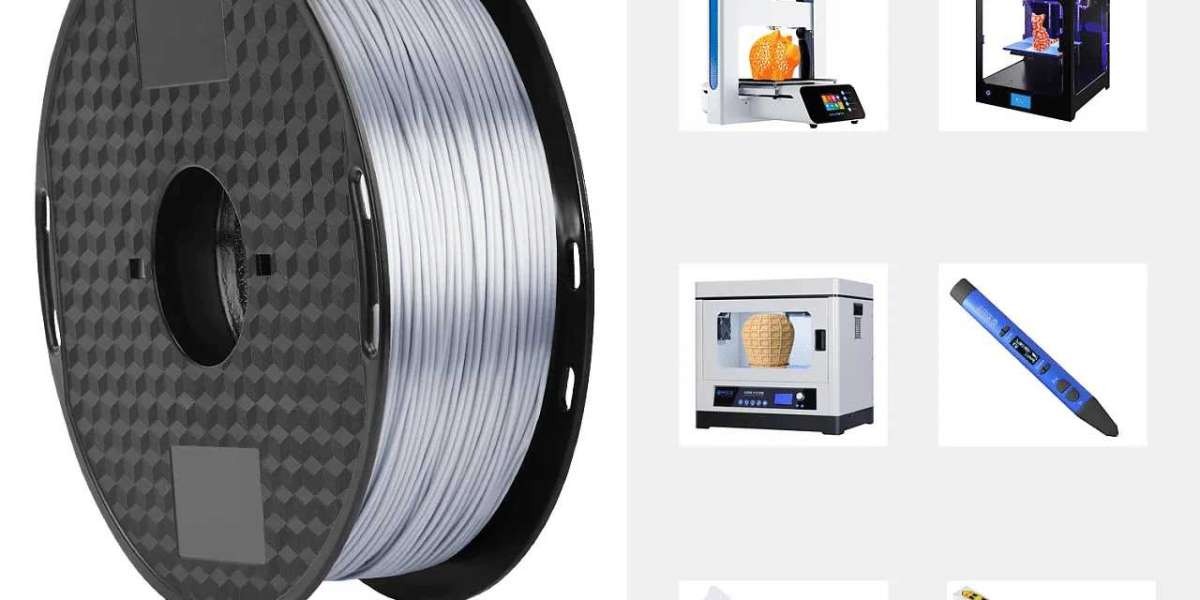3D printing technology, as a rapid prototyping technology, has been widely used in various fields. However, in the process of 3D printing, the high temperature brittleness of the filament is a problem that can not be ignored, which directly affects the performance and quality of the printed part.
First of all, the extrusion temperature is an important factor affecting the high temperature brittleness of 3D printing filament.
The extrusion temperature determines the melting state of the filament, which affects the fluidity and viscosity of the molding process. In the low temperature area, the plasticization of the filament is incomplete, the filament is subjected to greater resistance during filament production, and the filling rate is low, resulting in insufficient strength of the printed part and easy to appear brittle. In the high temperature region, although the melting rate of the filament is fast, too high temperature will lead to increased dimensional error and "collapse" phenomenon, which will also affect the high temperature performance of the printed part. Therefore, choosing the right extrusion temperature is very important to improve the high temperature brittleness of the printed part.
Secondly, the thickness of the printing layer is also one of the key factors affecting high temperature brittleness.
The thickness of the printing layer determines the number of stacked layers of silk and the printing accuracy. The smaller the layer thickness, the more printing layers, the better the theoretical accuracy, and the more dense the printing. However, too small layer thickness will increase the printing time and increase the processing cost. On the contrary, the greater the thickness of the layer, the fewer the number of printing layers, and the increased gap, although it saves consumables, it may reduce the strength and toughness of the printed part. In the high temperature brittleness test, the appropriate layer thickness can ensure the stability of the print at different temperatures.
The feed speed also affects the test results of high temperature brittleness.
The feed rate determines the feed rate of the filament and affects the filling rate and dimensional accuracy in the printing process. In the low feed rate area, the filling rate is higher, and the density and strength of the printed parts are better. However, too slow feed speed will reduce printing efficiency and increase production costs. Therefore, it is necessary to find a balance between ensuring the high temperature performance of the printed part and improving production efficiency.
In addition, the material and formula of the filament itself are also important factors affecting high temperature brittleness.
Different materials have different thermal and mechanical properties, so the selection of filament needs to be considered according to the specific application needs. For example, PEEK (polyether ether ketone) materials have excellent high temperature properties, but the extrusion temperature and feed speed need to be controlled during the printing process to avoid excessive melting or incomplete plasticization.
Finally, the printing environment and post-treatment process also have an impact on the high temperature brittleness test results.
The temperature and humidity of the printing environment will affect the melting state of the filament and the molding process, and the post-treatment process such as annealing can improve the internal stress distribution of the printed part and improve its high temperature performance. Therefore, in the high temperature brittleness test, it is necessary to control the printing environment and post-processing process to ensure the accuracy and reliability of the test results.
In summary, the high temperature brittleness of 3d printer filament is affected by a variety of factors, including extrusion temperature, printing layer thickness, feed speed, filament material and formula, printing environment and post-treatment process. In practical applications, these factors need to be considered comprehensively, and the high temperature performance of printed parts can be improved by optimizing the printing parameters and processes, so as to meet the needs of different fields. With the continuous development and improvement of 3D printing technology, it is believed that there will be more breakthroughs and innovations in high temperature brittleness testing in the future.






